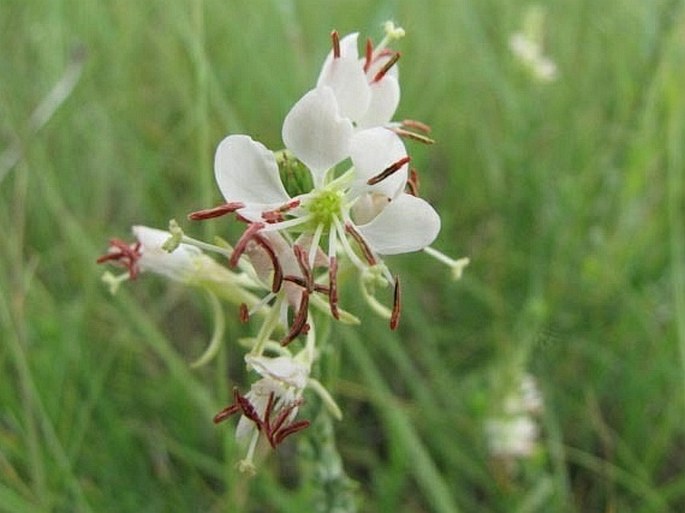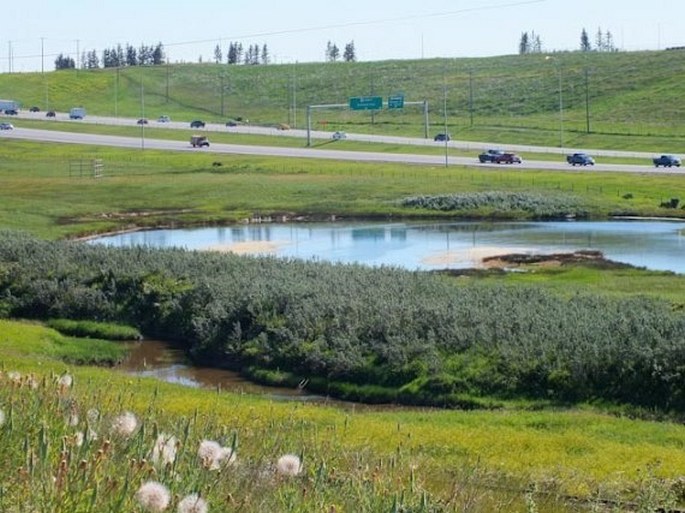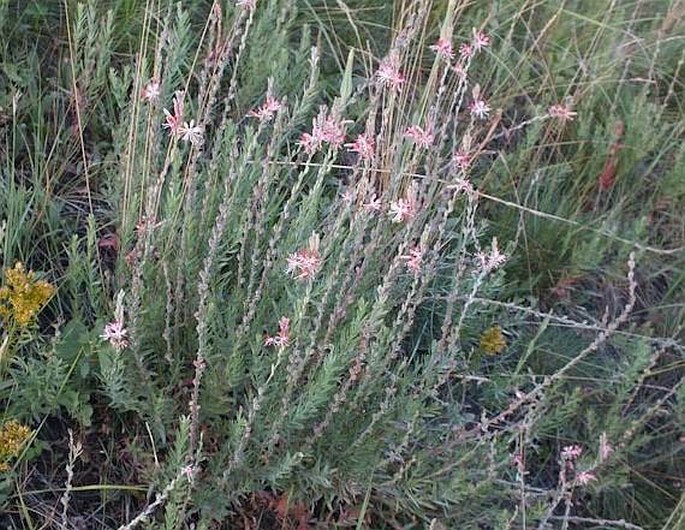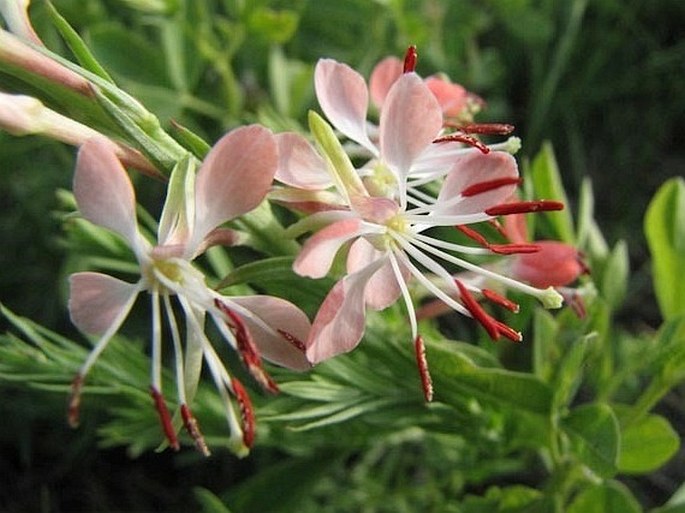Syn.: Gaura glabra Lehm., Gaura odorata Sessé ex Lag., Gaura suffrutescens Ser., Oenothera suffrutescens (Ser.) W. L. Wagner et Hoch
Family: Onagraceae Juss.

Distribution: North American species, found from southwest of British Columbia across prairies as far east as state of New York (evidently native to prairies but spread along the railways). In the south it is found in California and northern Mexico and Louisiana. It is absent in southeast of US and north of Canada.
Ecology: Prairie plant, in grasslands, dry and sandy localities, along railways. Blooms from June to August.

Description: Perennial herb with erect stem, often leaning at surrounding vegetation, about 30 cm tall, branched at the top, densely leaved. Leaves are alternate, stalkless, oblong to linear or lance-shaped, 1–3 cm long and 1–10 mm wide, margins smooth to wavy. Flower spike is terminal, leafy, 5–15 cm long. Flowers white upon opening in the evening, turning scarlet with age, slightly irregular, 7-12 mm across; sepals 4; petals 4; stamens 8; pistil 1. Fruit is a nut-like capsule, about 6 mm long; seeds 1–4.
Usage: A decorative perennial, however in culture you mainly see a Gaura lindheimeri, which comes from Texas and Louisiana and therefore, cannot survive harsher Central European winters.
Note: Prairie (Plains) tribes used this plant to treat burns, inflammations and general body pains.



These images were taken in Canada, Alberta, Calgary, Confluence Park (August 5, 2013).


